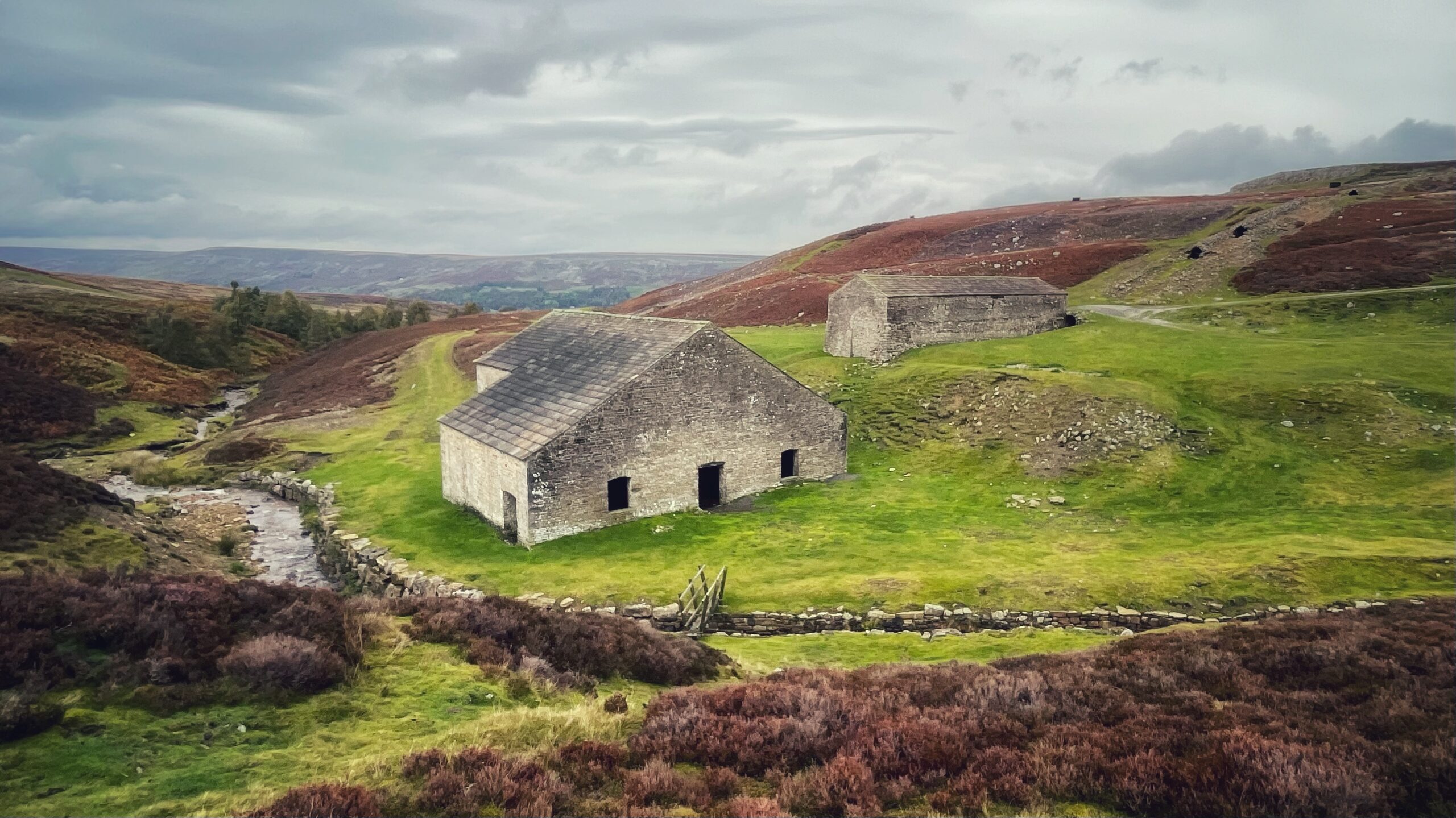Grinton Smelting Mill is one of the best-preserved lead mills in the Yorkshire Dales. It sits in Cogden Gill, just south of Grinton village, at the confluence of two becks. The site offered water, level ground, and easy access to ore. One of the becks had to be diverted, culverted and partly covered to make space for the building.
In the Dales, lead smelting mills once stood in their dozens. Most have been robbed out, demolished, or just left to decay. Grinton survived by accident. When the furnaces fell silent in 1886, the building was pressed into farm use. This unglamorous second life kept the walls standing and the roof sound. In 1987 the National Park stepped in, dismantled the slate roof piece by piece, repaired the timber and stone, then rebuilt it exactly as it was1LEAD MINING IN THE YORKSHIRE DALES BY JOHN MORRISON. Page131. Dalesman Publishing Company. 1998..
The roof is an engineering feat. Hand-sawn pine beams span the full width of the building without extra supports. Pegged joints hold it all together. Inside, the structure has been altered over time, but enough remains, aided by an interpretation board, to picture the process: a waterwheel driving huge bellows, feeding the flames of two reverberatory furnaces. The building’s walls are nearly a metre thick, built to contain fire and heat. The wooden frame for the air-pump still stands, though the wheel itself has gone.
From the early 1700s, the London Lead Company ran the site, their Quaker ideals giving workers a rare degree of care. The mill processed ore from across the southern slopes of Swaledale, though ownership of those mines was bitterly contested.
A leat brought water from upstream, with a dam and reservoir to ensure supply. The height of the leat where it enters just beneath the roof beams gives some indication of the size of the waterwheel—about 7 metres. Nearby, a peat store once held enough fuel for a year’s work; later it housed cows.
The flue can be seen climbing Sharrow Hill, four hundred metres to a chimney above. Much of it has collapsed, but enough remains to reveal the skill of the masons.
Grinton is more than a ruin. It is a relic of the industry that reshaped these dales, preserved not by design, but by chance.
- 1LEAD MINING IN THE YORKSHIRE DALES BY JOHN MORRISON. Page131. Dalesman Publishing Company. 1998.

Leave a Reply